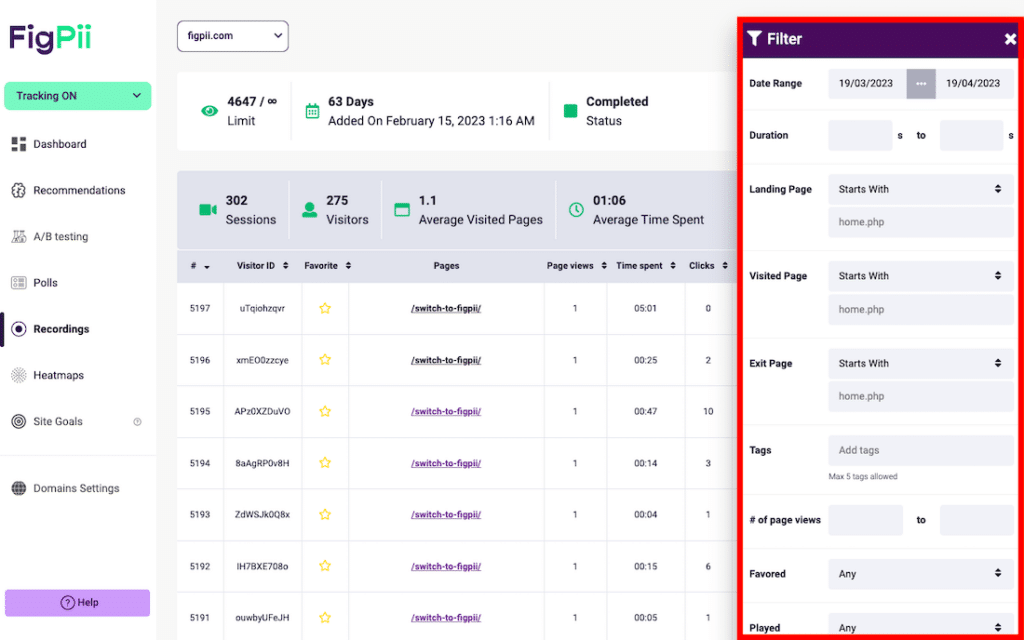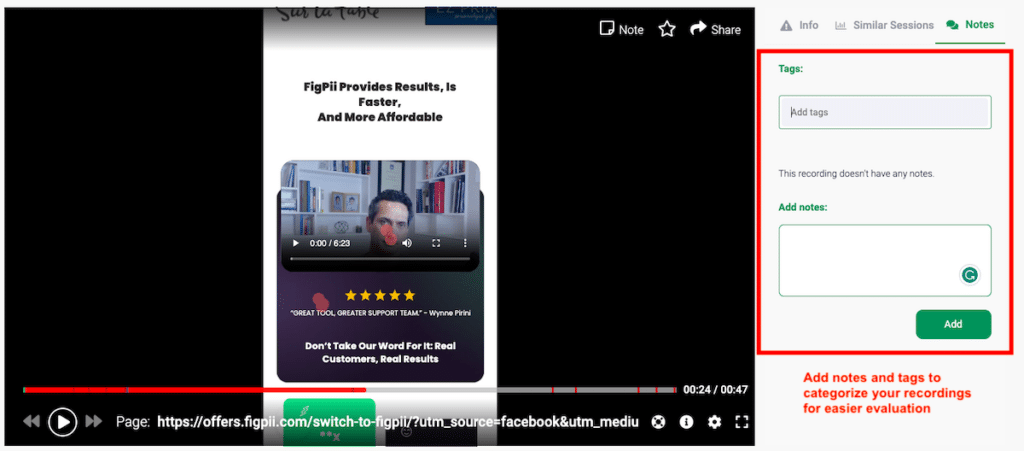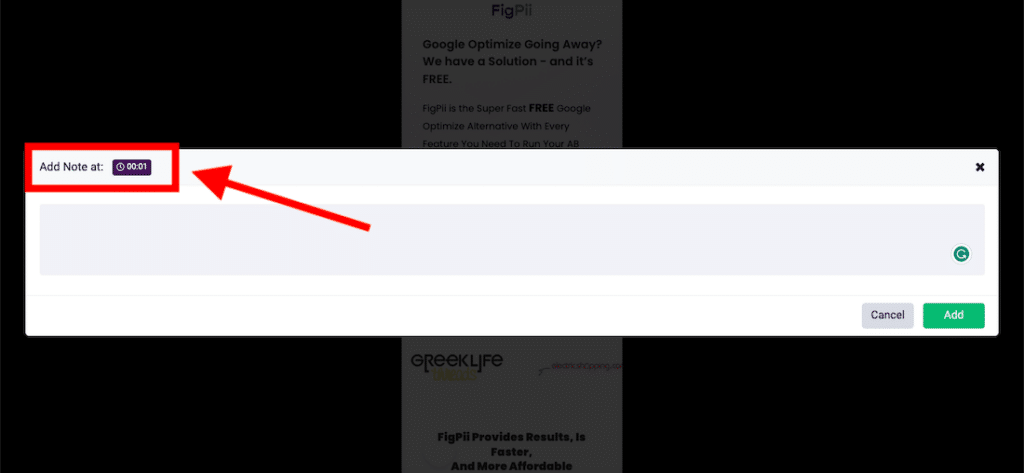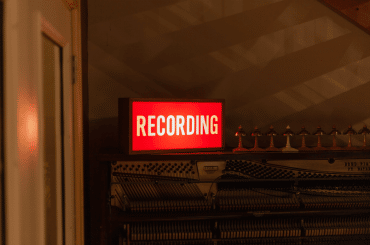Did you know that up to 70% of online shopping carts get abandoned before checkout?
This highlights the importance of optimizing the user experience on websites and applications.
But how can we understand user behavior and improve their experience? This is where session replay videos come in.
By recording and analyzing user sessions, businesses can gain valuable insights into how users interact with their websites.
In this article, we’ll dive deeper into session replay analysis – with a step-by-step process and the best practices.
Session Replay Videos Overview
Session replay is a tool that allows you to record users’ actions on your website. It’s a great way to analyze user behavior and detect bottlenecks, but you can also use it for performance testing or improving your website.
Session replay videos are recorded using video technology, showing all user actions during their visit. This means that it records everything from clicks to mouse movements and scrolling.
What can you learn from session replays?
The primary purpose of session replays is to identify and fix problems with your website before they happen again.
For one, it makes it easier to identify bottlenecks on your site. If you have any issues with loading times or slow performance issues, you can place this by looking at how long users wait before they start scrolling or clicking something else. You’ll also be able to see if they’re getting impatient and leaving because of this issue too!
It also helps you identify issues with navigation. If anything is confusing about how users navigate around your site (e.g., unclear links), this will also show up clearly in the session replay video!
1. Preparing to analyze session replay videos
Defining goals and metrics
If you plan to analyze session replay videos, you need to know your goals and metrics beforehand.
Goals are the objectives you hope to achieve when you analyze session replay videos, while metrics are the quantifiable measurements that indicate progress toward those goals.
If you don’t have a plan, it’s easy to get lost in the data and make decisions based on what you think should be happening rather than what is actually happening.
For example, a goal could be to increase user engagement on a website or application. To measure progress toward this goal, you could focus on metrics like session duration, number of clicks, and bounce rate.
Another goal could be to increase conversion rates. In that case, your focus should be on add-to-cart rates, checkout completion rates, and revenue per session.
But defining goals and metrics isn’t nearly enough.
You have to make them (SMART) specific, measurable, achievable, relevant, and time-bound.
For example, “Increase conversion rates by 10% within the next three months” is a SMART goal.
This goal is:
- Specific (increase conversion rates)
- Measurable (by 10%)
- Achievable (within three months)
- Relevant (to the business objective)
- Time-bound (within three months)
Selecting appropriate tools
When you’re ready to analyze session replay videos, you’ll need some tools.
Luckily, there are different session replay tools available that can help record and analyze session replay videos. But you have to pick the one for your specific needs.
One tool that is worth mentioning is FigPii.
FigPii is a session replay and website optimization tool that allows you to record and analyze user behavior on your website. You can also filter and segment sessions based on various criteria, such as browser type, device type, location, and more.
Along with session replay, it has got heatmaps, click maps, session replay, and form analytics. So, when you use these features in conjunction with session replay, you’ll have valuable insights into how users interact with your website.
There are other session replay tools available as well, including Hotjar, Crazy Egg, and Mouseflow, among others. Each tool has its own strengths and weaknesses, so it’s essential to evaluate which one is best for your specific needs.
When searching for a session replay tool, look for factors like:
- Ease of use: If your tool isn’t easy to use and navigate, all the features in the world couldn’t make up for it. You want a tool that allows you to find the information you need without having to spend hours digging through data.
- Cost: Consider the cost of the tool and whether it fits within your budget. Some tools offer free plans with limited features, while others require a paid subscription for full access.
- Multiple data sources: Some session replay tools can collect data from multiple sources, including your website, mobile app, and social media channels.
- Session sharing: Look for a tool that allows you to share specific sessions with other team members or stakeholders, making it easier to collaborate and make data-driven decisions.
- Integrations: What if you’re already using a marketing automation tool? In that case, you’ll want a session replay tool that integrates well with it.
- Addition features: Session replay features are just one aspect of your conversion optimization journey. You’ll have to use your session recordings in tandem with additional features to analyze user behavior on your website. Some common features include heat maps, click maps, and form analytics.
- Customer support: Look for a tool that offers good customer support in case you run into any issues or need help using the tool.
It’s also important to consider the level of privacy and security. FigPii, for example, prioritizes user data privacy and security and complies with GDPR and CCPA regulations. Other tools may have different levels of privacy and security measures in place.
Configure your recording settings and parameters.
Configuring your recording settings and parameters is another important step when you’re preparing to analyze session replay videos.
That said, different tools have different configuration options.
For this article, let’s see how you can do it with FigPii.
For starters, you can set the number of recordings to capture, which can help you balance the quality of your recordings with your storage space.
You can also choose to only record sessions that meet specific criteria, such as recording sessions that are longer than 30 seconds or only recording sessions with mouse and window activity.
In addition to defining the specific elements to track, you can also set filters to narrow down the sessions you want to analyze.
For example, you can filter sessions by device type and visitor type (returning, new, or all). This can help you focus your analysis on specific user segments and behaviors.
FigPii also offers page targeting options, allowing you to specify which pages or elements of your website to record. This can be particularly useful if you want to focus on a specific part of your site, such as a checkout process or a form submission page.
Once you’ve defined the specific elements to track and set your filters, you can start recording sessions. FigPii automatically records sessions in the background, so you don’t need to start and stop recordings manually.
Once you’ve recorded enough sessions, you can analyze the data to gain insights into how users interact with your website.
2. Analyzing session replay videos
After recording your session replay videos, the next step is to analyze them to gain insights into user behavior and identify improvement areas.
Using filters to narrow results
Most session recording tools come with filters that help you narrow down your analysis to specific segments of user behavior.
For example, you could use filters to focus on users who abandoned their shopping cart or spent significant time on a particular page. These filters help you identify user behavior patterns and trends that’ll prove monumental when you optimize your website.
You can also segment your session recordings by user type, country, device, operating system, browser, experiment ID, and more.
Search functionality can also be helpful for analyzing session replay videos. With search functionality, you can quickly locate specific user sessions or events within a session.
For instance, you could search for sessions where users encountered errors or experienced slow page load times. By focusing on these sessions, you can identify the specific issues impacting the user experience and take steps to address them.
Taking notes and categorizing sessions
The first step to analyzing session replay videos is to take notes while watching them. The key here is to be as detailed as possible. You can’t expect to remember everything, so write down anything that stands out or might be important later on.
You can create tags to represent different types of user behavior, such as “abandoned cart” or “engaged with video content.” Applying these tags to specific sessions lets you quickly categorize and group sessions based on their behaviors.
For instance, FigPii lets you take notes directly within the session replay video player. This helps you capture your observations and insights as you watch the video. You can also create custom tags for specific sessions to categorize and group them based on their behavior.
Another great thing about FigPii’s note-taking ability is that it allows you to leave notes at different time stamps.
This makes it easier to identify patterns and trends in user behavior and pinpoint areas for improvement on your website.
Using heatmaps and click maps
In addition to session replay videos, heatmaps and click maps will help you dive deeper into user behavior patterns. Heatmaps visually represent where users click and how they interact with your website, while click maps show where users click on each page.
And when you use heatmaps and click maps in conjunction with session replay videos, you can gain a deeper understanding of user behavior and identify specific areas of your website that may be causing issues.
For example, suppose you notice that users are clicking on an element or a web page link that isn’t actually clickable. In that case, you may want to consider redesigning that part of your website to make it more intuitive. Alternatively, if users consistently click on a specific button, you’ll probably want to consider making that button more prominent or easier to find.
Quantifying user behavior with metrics
You can use session replay to record the actions of a user, but you can also use it to determine what the user did, where they went, and how long they stayed in each area.
The metrics you collect can help you identify bottlenecks and areas that need improvement. They can also help you understand which features are being used and which ones are not.
Here are some examples of metrics that you can collect from session replays:
- Page views
- Time spent on pages
- Average session duration
- Bounce rate
- Scroll depth (how far users scroll down the page)
There are two main reasons why you should use metrics when analyzing session replays.
The first reason is that metrics provide an objective way to measure user behavior. When you’re looking at a video, it’s easy to get caught up in what you see and miss the big picture. Metrics help you see the trends, not just individual events.
The second reason is that metrics will help you identify areas where users struggle. If you notice a drop in conversions, for example, it could be due to a number of issues: poor copy on your landing page, broken links on your site, or even a bad user experience. However, using metrics can help pinpoint the exact problem so you can fix it quickly.
3. Interpreting and using data
You need to interpret the data correctly to get the most out of session recordings. Here are some tips for interpreting session recording data:
Identifying issues and opportunities for improvement
Identifying the issues is the first step in using session replay for website optimization. Session recordings are a great tool for identifying problems on your website but aren’t always easy to interpret.
The following tips will help you use this data effectively:
Identify problem areas on your site.
Look for common issues like slow page loads, broken links, and abandoned shopping carts. You can address these problems right away by making changes to your site’s code or content. You may also want to consider adding some new features to your site, including video tutorials or additional product information.
Look for opportunities to improve over time through additional testing and research. These include products that customers may be interested in but can’t find easily enough on your website. Or, they could be products you could sell more of if they were promoted more effectively. Or improvements that would make navigation easier for customers or improve the overall user experience on your site.
The next step is determining how much time users spent on each page to understand how well they engaged with your site or app. This will give you insight into how effective the experience was at retaining users and driving conversions.
Finally, you’ll want to evaluate whether there are any areas where users are spending too much time trying to accomplish tasks that could be made easier through automation or simplification.
Collaborating with team members
You don’t have to interpret all the data independently. Collaborating with other team members can help you identify patterns in the data and problems that aren’t obvious at first glance.
Here are some tips that will come in handy when working with team members on interpreting and using session recording data.
- Don’t worry too much about how many sessions you need to watch before drawing conclusions.
- Make sure you’re watching the right sessions (and not just ‘any’ session)
- Know who is observing so that you can collaborate effectively
- Acknowledge your own biases and be open to hearing others’ opinions
Optimizing the website or application design
The final step in the process of interpreting session recordings is to use the analysis results to improve a website or application.
This would include making changes in web pages, navigation, or user interface elements.
For example, session recordings might help you pinpoint users facing navigating difficulties on a certain section of your website. This could prompt you to redesign the navigation menu or add more descriptive labels to make it more intuitive.
Similarly, you might notice through click heatmaps and session recordings that users are clicking on an element that is not clickable, such as an image. This could prompt you to make that element clickable or remove it altogether to avoid confusion.
Best practices for analyzing session replay videos
It’s apparent by now that session recordings work as a goldmine of information that you can use to improve your website performance. Video analysis can help you identify where users are getting stuck, what they’re struggling with, and how to improve your customer experience.
However, as with any tool or marketing technique, there are best practices for analyzing session replay videos to help you get the most out of it. Here’s a quick overview:
- Prioritizing privacy and security of user data: Avoid exposing any personal information that could put your users at risk. This includes avoiding recording sensitive data like credit card or social security numbers during analysis. Additionally, make sure that you’re using a GDPR-compliant session replay tool.
- Focusing on the most important metrics: While it can be tempting to analyze every piece of data available, it’s important to identify the most relevant metrics for your business goals and focus on those. For example, if your goal is to increase conversions, focus solely on metrics like click-through rates and conversion rates.
- Considering different perspectives: While watching session replays, you’ll obviously focus on user interactions and behavior. But at the same time, considering its context is also important. For example, a user may struggle with a certain task because of a confusing interface or lack of clear instructions.
- Using data to support decisions, not replacing human judgment: Data can provide valuable insights, but it’s ultimately up to humans to interpret that data and make informed decisions.
- Regularly reviewing and updating analysis methods: As user behavior, expectations, and technology change, it’s important to adapt your analysis methods to stay current and effective.
Don’t Just Watch Your Users Bounce – Analyze Session Replay Videos Like a Pro!
To sum it up, session recording analysis is a game-changer for improving user experience on websites and applications.
And if you follow the best practices like focusing on key metrics, considering multiple perspectives, and using data to support decisions, it will be even easier to gain meaningful insights into user behavior and make informed CRO decisions.
Picking the right session replay tool is equally vital. We already saw how tools like FigPii make recording and analyzing user sessions a breeze.
Ultimately, prioritizing a smooth user journey can improve conversion rates, customer satisfaction, and overall success.










